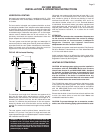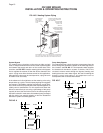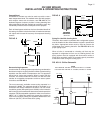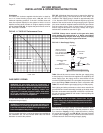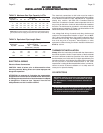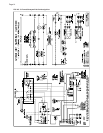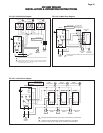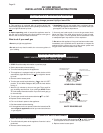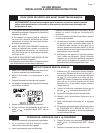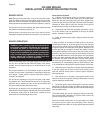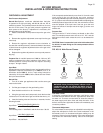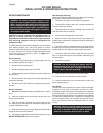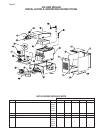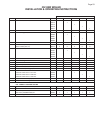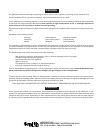Page 21
GV100W BOILER
INSTALLATION & OPERATING INSTRUCTIONS
Controls/Burners
Refer to the BOILER OPERATION and CHECKING and
ADJUSTMENT sections in this manual.
1. Check the thermostat for proper operation.
2. If the boiler has been equipped with a low water cut-off
device, L.W.C.O, ensure that it operates properly. A float type
L.W.C.O. should be flushed out.
3. The relief valve should vent water when the test lever is
lifted. It should not weep or discharge water at normal system
pressure. Never try to clean or repair the relief valve! If the valve
fails replace it!
4. The aquastat high limit controls the maximum water
temperature in the boiler. It is adjustable from 140°F,
60°C
, to
220°F,
104°C
. If the water temperature reaches the set
temperature before the demand for heat has been met, the
aquastat high limit should shut the burners off. The outlet water
temperature should never exceed 220°F,
104°C
. If the aquastat
high limit fails to function properly replace it.
5. Visually check the burner flames. See FIG. NO. 18.
INSTRUCTIONS TO THE INSTALLER
The installer must give this copy of the INSTALLATION AND
OPERATING INSTRUCTIONS to the boiler owner and make
sure that the owner or operator has a basic understanding of
the following:
1. The lighting instructions, the type of ignition system installed
and how it operates.
2. What the labels on the boiler say.
3. How to start up and shut off the boiler.
4. How to turn the gas and electrical power on or off.
5. What to do if the boiler ignition system locks out.
6. Where to check the system temperature and pressure and
what they should be.
7. The importance of reading, understanding and following
these instructions.
The installer must make sure that the owner knows to shut
the boiler off and call for service if the following conditions
occur:
1. Yellow lazy flames or flames outside the boiler jacket.
2. Gas smell or other strange odors.
3. Discoloration of the boiler or surrounding materials due to
overheating.
4. Water leaking from the heating system piping or relief valve.
5. Flue products leaking from the vent system into the living
space. Dampness or condensation in the building is a good
indicator of this condition.
6. The boiler’s flame roll-out safety system is actuated.
7. Control malfunction or sporadic operation.



